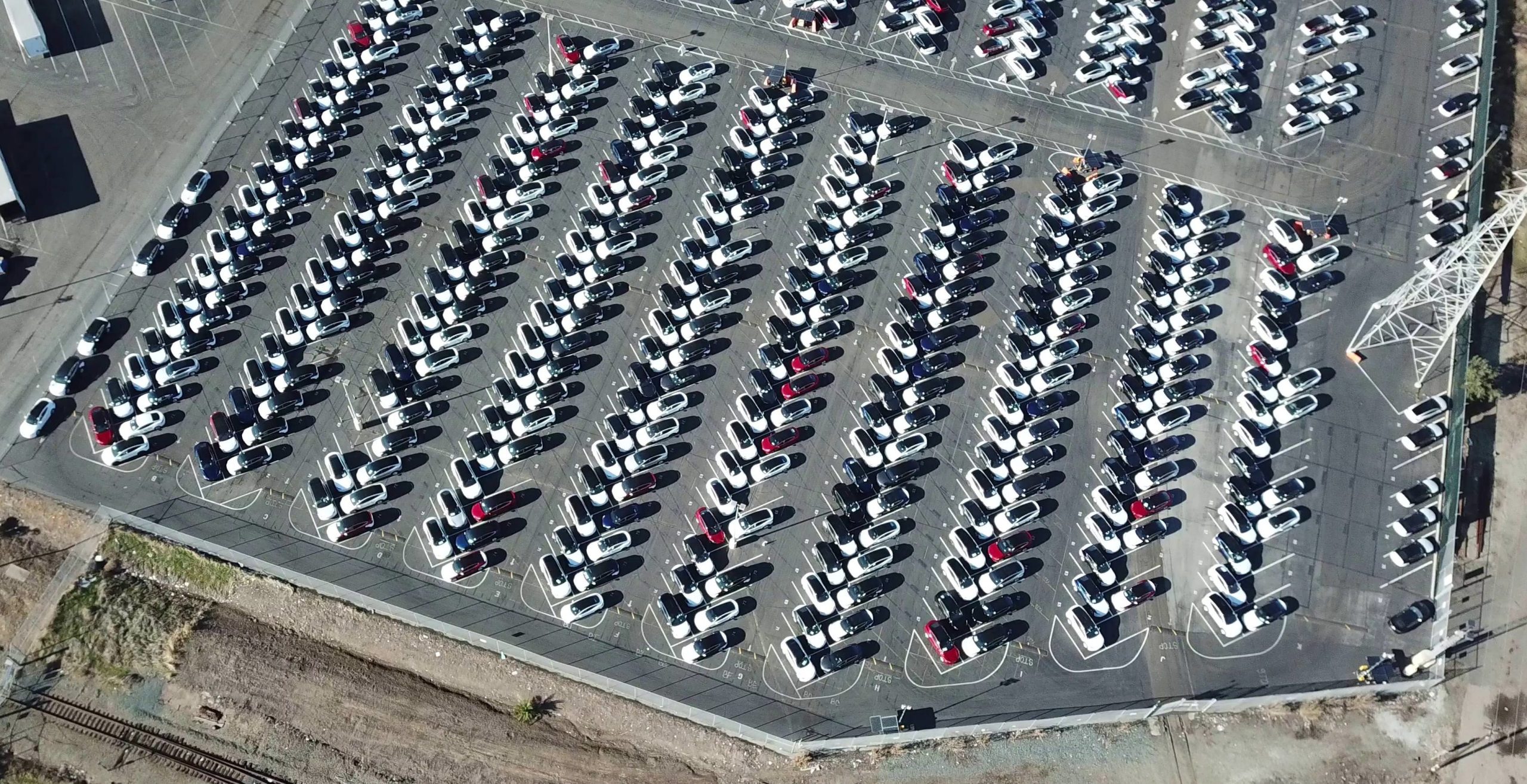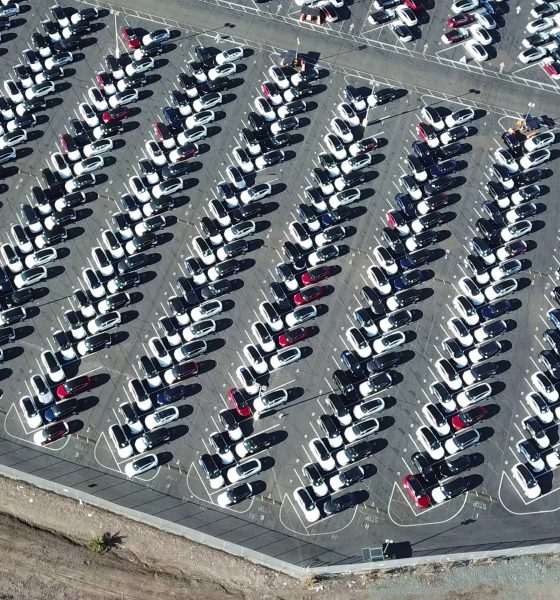

Investor's Corner
Tesla reports Q1 earnings: Wide loss during logistical challenges
Tesla’s (NASDAQ:TSLA) first-quarter earnings for 2019 saw the California-based electric car maker fall short of Wall Street’s revenue estimates after posting $4.5 billion in revenue. Additionally, the company missed analysts on the bottom line by a wide margin with a GAAP loss of $702 million. In the fourth quarter of last year, the company posted a GAAP profit of $139M on revenue of $7.2B, representing a revenue drop of 37% in the first quarter.
The results, which were disclosed shortly after the closing bell on Wednesday, April 24, showed third-quarter loss of $2.90 per share on an adjusted basis, missing analyst estimates of -$.69 per share, per Refinitiv. Revenue was $4.54 billion versus an estimate of $5.2 billion.
DON’T MISS: Join us LIVE on Tesla’s Q1 earnings call with Elon Musk
During the quarter Tesla underwent several restructuring changes, the company reported a $67M charges due to the changes. Tesla reported that demand of the Model S and X fell significantly in the first quarter, largely due to “seasonality”, the reduction in US tax credits, and the discontinuation of the 75kWh battery pack.
The company revealed for the first time that Model 3 production has moved from customized orders to batch production. This change, which is different than the production of the Model S and X, leaves Tesla with more inventory until the vehicle variants are sold.
Gross margins for Tesla’s vehicles dropped across the board, from 24.3% to 20.2% on a GAAP basis. Tesla attributed this change to the price reduction and reduced deliveries on the Model S and X and lower cost variants of the Model 3 hitting the market. Tesla stated that they continue to strive for a 25% gross margin on a combination of all three vehicles. To spur increased demand for their high-priced Model S and X, the company launched refreshed platforms with the longest range of any electric vehicle on the market.
Gigafactory 3
The company is still expecting to reach volume production at its third Gigafactory in Shanghai, China by the end of 2019. “If our Gigafactory Shanghai is able to reach volume production early in Q4 this year, we may be able to produce as many as 500,000 vehicles globally in 2019,” the letter stated.
In addition to bringing the factory online by the end of the year, Tesla believes they have made significant headway into improving efficiencies at the forthcoming facility. “Learning from our experience, we can now build a second-generation Model 3 line in China that we expect will be at least 50% cheaper per unit of capacity than our Model 3-related lines in Fremont and at Gigafactory 1. Our Model Y manufacturing capacity will have the same simplicity as the line planned for Gigafactory Shanghai.”
Tesla’s cash position declined from $3.7B to $2.2B in the first quarter, with the majority of the drop can be attributed to the repayment of a $920M convertible note. Tesla expects to turn a profit again in Q3 of 2019, while reducing losses in the second quarter.
Tesla’s stock was down 1.99% for the day and is now flat after hours in the moments after Tesla reported earnings.
You can read the full Q1 shareholder letter here.

Investor's Corner
Tesla stock closes at all-time high on heels of Robotaxi progress

Tesla stock (NASDAQ: TSLA) closed at an all-time high on Tuesday, jumping over 3 percent during the day and finishing at $489.88.
The price beats the previous record close, which was $479.86.
Shares have had a crazy year, dipping more than 40 percent from the start of the year. The stock then started to recover once again around late April, when its price started to climb back up from the low $200 level.
This week, Tesla started to climb toward its highest levels ever, as it was revealed on Sunday that the company was testing driverless Robotaxis in Austin. The spike in value pushed the company’s valuation to $1.63 trillion.
Tesla Robotaxi goes driverless as Musk confirms Safety Monitor removal testing
It is the seventh-most valuable company on the market currently, trailing Nvidia, Apple, Alphabet (Google), Microsoft, Amazon, and Meta.
Shares closed up $14.57 today, up over 3 percent.
The stock has gone through a lot this year, as previously mentioned. Shares tumbled in Q1 due to CEO Elon Musk’s involvement with the Department of Government Efficiency (DOGE), which pulled his attention away from his companies and left a major overhang on their valuations.
However, things started to rebound halfway through the year, and as the government started to phase out the $7,500 tax credit, demand spiked as consumers tried to take advantage of it.
Q3 deliveries were the highest in company history, and Tesla responded to the loss of the tax credit with the launch of the Model 3 and Model Y Standard.
Additionally, analysts have announced high expectations this week for the company on Wall Street as Robotaxi continues to be the focus. With autonomy within Tesla’s sights, things are moving in the direction of Robotaxi being a major catalyst for growth on the Street in the coming year.
Elon Musk
Tesla needs to come through on this one Robotaxi metric, analyst says
“We think the key focus from here will be how fast Tesla can scale driverless operations (including if Tesla’s approach to software/hardware allows it to scale significantly faster than competitors, as the company has argued), and on profitability.”

Tesla needs to come through on this one Robotaxi metric, Mark Delaney of Goldman Sachs says.
Tesla is in the process of rolling out its Robotaxi platform to areas outside of Austin and the California Bay Area. It has plans to launch in five additional cities, including Houston, Dallas, Miami, Las Vegas, and Phoenix.
However, the company’s expansion is not what the focus needs to be, according to Delaney. It’s the speed of deployment.
The analyst said:
“We think the key focus from here will be how fast Tesla can scale driverless operations (including if Tesla’s approach to software/hardware allows it to scale significantly faster than competitors, as the company has argued), and on profitability.”
Profitability will come as the Robotaxi fleet expands. Making that money will be dependent on when Tesla can initiate rides in more areas, giving more customers access to the program.
There are some additional things that the company needs to make happen ahead of the major Robotaxi expansion, one of those things is launching driverless rides in Austin, the first city in which it launched the program.
This week, Tesla started testing driverless Robotaxi rides in Austin, as two different Model Y units were spotted with no occupants, a huge step in the company’s plans for the ride-sharing platform.
Tesla Robotaxi goes driverless as Musk confirms Safety Monitor removal testing
CEO Elon Musk has been hoping to remove Safety Monitors from Robotaxis in Austin for several months, first mentioning the plan to have them out by the end of 2025 in September. He confirmed on Sunday that Tesla had officially removed vehicle occupants and started testing truly unsupervised rides.
Although Safety Monitors in Austin have been sitting in the passenger’s seat, they have still had the ability to override things in case of an emergency. After all, the ultimate goal was safety and avoiding any accidents or injuries.
Goldman Sachs reiterated its ‘Neutral’ rating and its $400 price target. Delaney said, “Tesla is making progress with its autonomous technology,” and recent developments make it evident that this is true.
Investor's Corner
Tesla gets bold Robotaxi prediction from Wall Street firm
Last week, Andrew Percoco took over Tesla analysis for Morgan Stanley from Adam Jonas, who covered the stock for years. Percoco seems to be less optimistic and bullish on Tesla shares, while still being fair and balanced in his analysis.

Tesla (NASDAQ: TSLA) received a bold Robotaxi prediction from Morgan Stanley, which anticipates a dramatic increase in the size of the company’s autonomous ride-hailing suite in the coming years.
Last week, Andrew Percoco took over Tesla analysis for Morgan Stanley from Adam Jonas, who covered the stock for years. Percoco seems to be less optimistic and bullish on Tesla shares, while still being fair and balanced in his analysis.
Percoco dug into the Robotaxi fleet and its expansion in the coming years in his latest note, released on Tuesday. The firm expects Tesla to increase the Robotaxi fleet size to 1,000 vehicles in 2026. However, that’s small-scale compared to what they expect from Tesla in a decade.
Tesla expands Robotaxi app access once again, this time on a global scale
By 2035, Morgan Stanley believes there will be one million Robotaxis on the road across multiple cities, a major jump and a considerable fleet size. We assume this means the fleet of vehicles Tesla will operate internally, and not including passenger-owned vehicles that could be added through software updates.
He also listed three specific catalysts that investors should pay attention to, as these will represent the company being on track to achieve its Robotaxi dreams:
- Opening Robotaxi to the public without a Safety Monitor. Timing is unclear, but it appears that Tesla is getting closer by the day.
- Improvement in safety metrics without the Safety Monitor. Tesla’s ability to improve its safety metrics as it scales miles driven without the Safety Monitor is imperative as it looks to scale in new states and cities in 2026.
- Cybercab start of production, targeted for April 2026. Tesla’s Cybercab is a purpose-built vehicle (no steering wheel or pedals, only two seats) that is expected to be produced through its state-of-the-art unboxed manufacturing process, offering further cost reductions and thus accelerating adoption over time.
Robotaxi stands to be one of Tesla’s most significant revenue contributors, especially as the company plans to continue expanding its ride-hailing service across the world in the coming years.
Its current deployment strategy is controlled and conservative to avoid any drastic and potentially program-ruining incidents.
So far, the program, which is active in Austin and the California Bay Area, has been widely successful.








